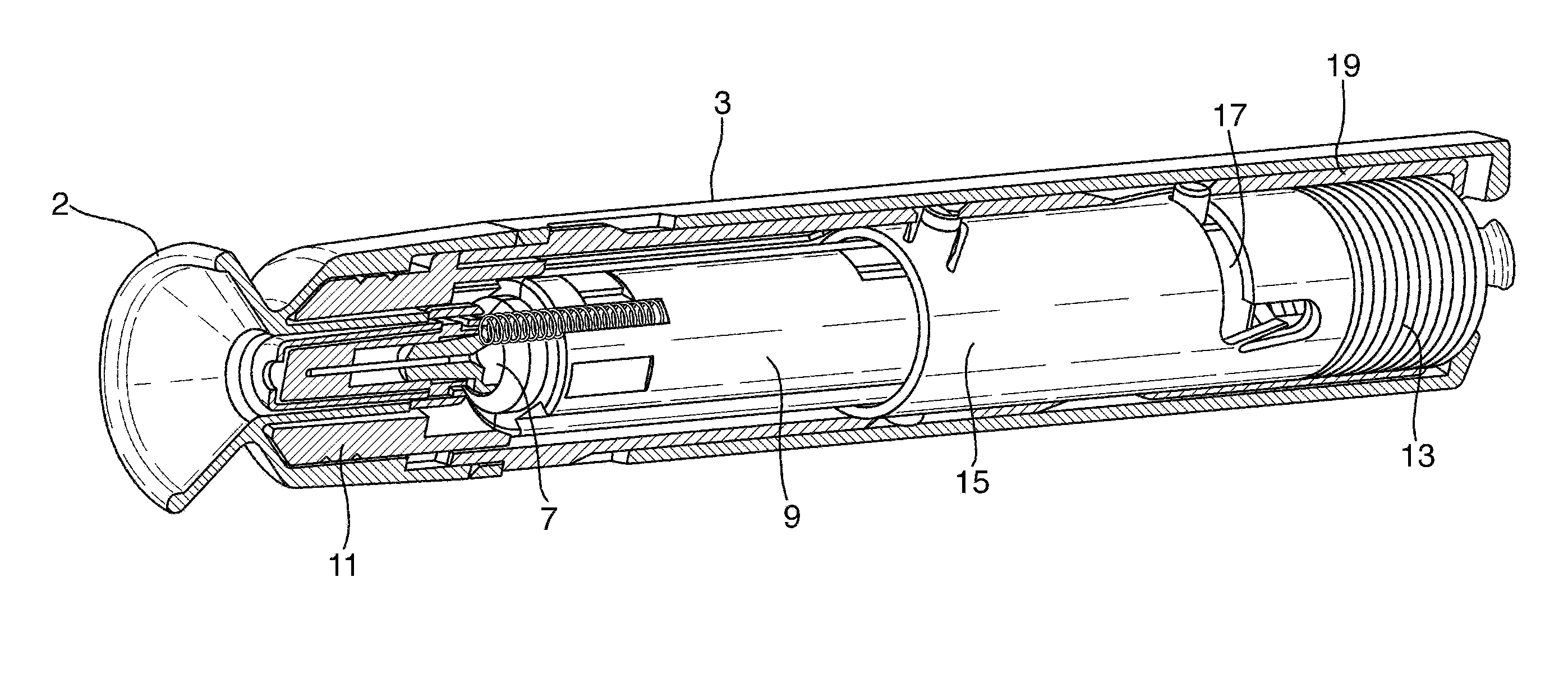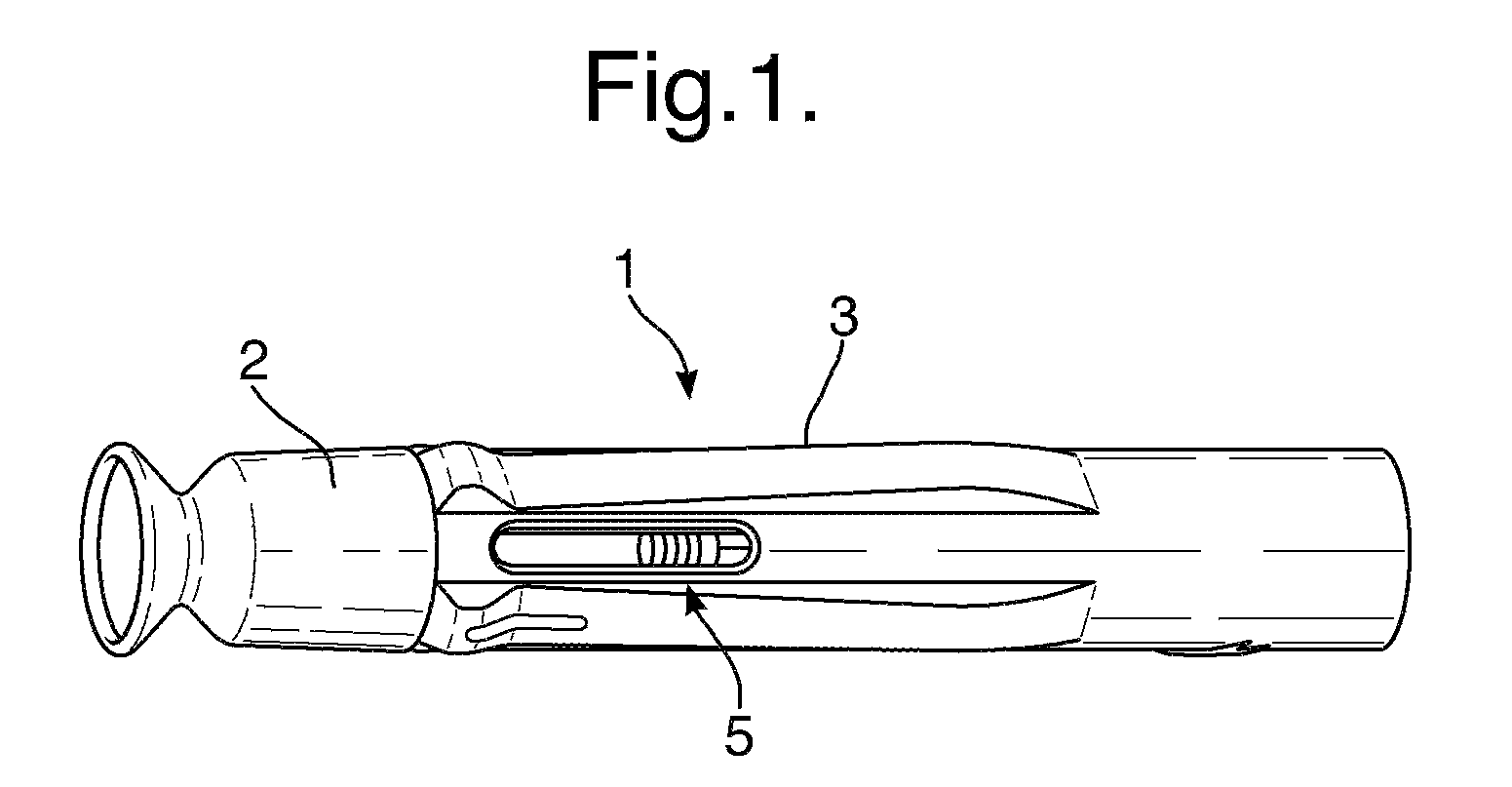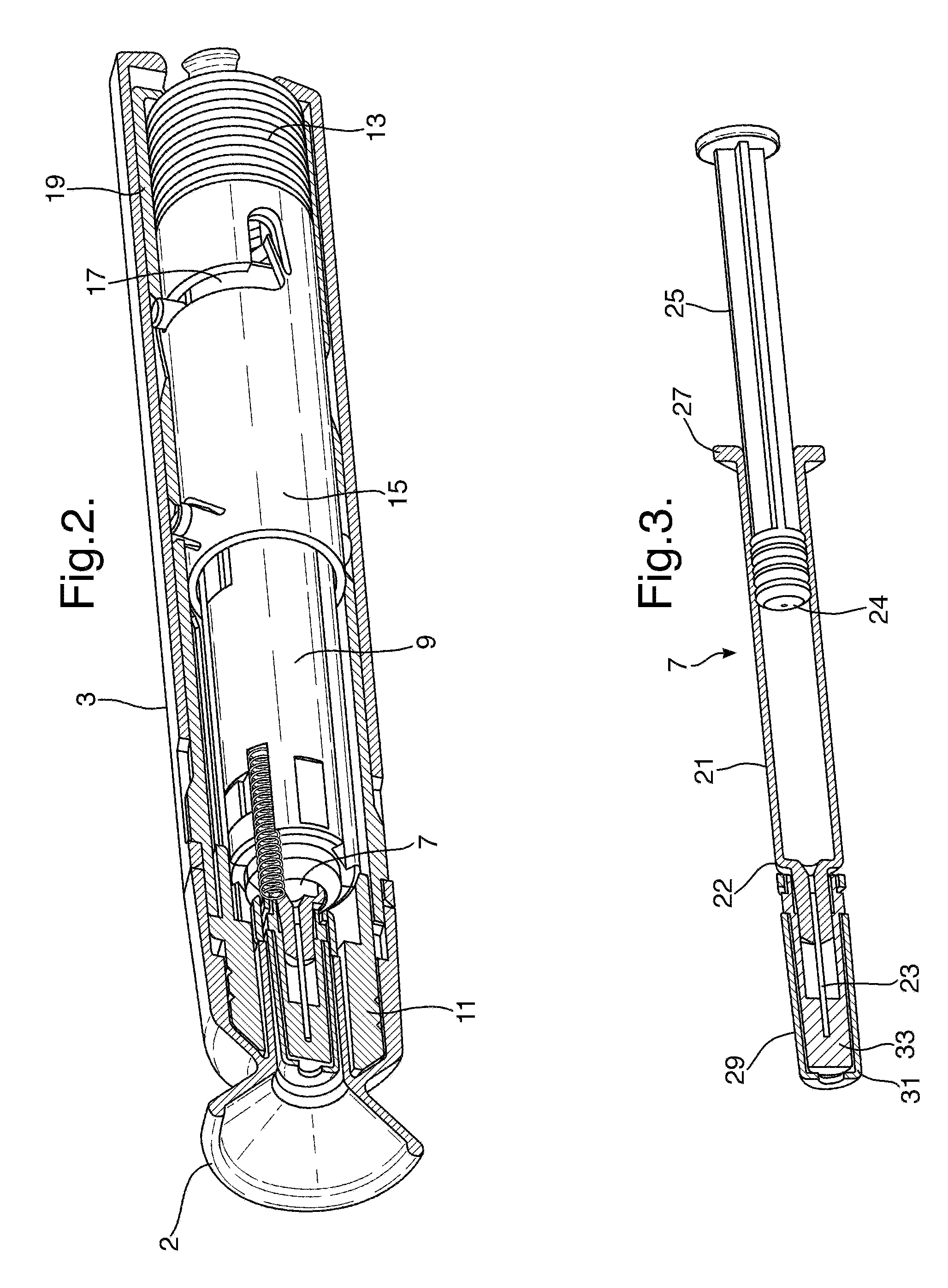Injection device
a technology of injection device and syringe, which is applied in the direction of infusion needle, other medical devices, intravenous devices, etc., can solve the problems of significant risk of breakage, easy to breakage, and easy to damage the syringe, so as to avoid frictional effects
- Summary
- Abstract
- Description
- Claims
- Application Information
AI Technical Summary
Benefits of technology
Problems solved by technology
Method used
Image
Examples
first embodiment
[0247]the invention will be described with respect to FIGS. 1 to 29. FIG. 1 shows an automatic injection device in accordance with one embodiment of the invention. FIG. 1 shows the device after removal from any blister pack secondary packaging, and prior to use to administer an injection.
[0248]The device 1 has a rear end towards the right-hand side of the device in FIG. 1, and a front end towards the left-hand side of the device in FIG. 1. The device 1 includes an end cap 2 and a rear outer housing 3. The front end is the needle end of the device. In use, the end cap 2 is removed by a user to expose the front, needle end of the device. The rear outer housing 3 is gripped by the user during operation of the device to hold the front end against the skin. The rear housing 3 is provided with a tactile surface covering, and may includes ribs and other surface formations to facilitate gripping of the device, particularly if the device is intended for use with those with impaired manual de...
PUM
 Login to View More
Login to View More Abstract
Description
Claims
Application Information
 Login to View More
Login to View More - R&D
- Intellectual Property
- Life Sciences
- Materials
- Tech Scout
- Unparalleled Data Quality
- Higher Quality Content
- 60% Fewer Hallucinations
Browse by: Latest US Patents, China's latest patents, Technical Efficacy Thesaurus, Application Domain, Technology Topic, Popular Technical Reports.
© 2025 PatSnap. All rights reserved.Legal|Privacy policy|Modern Slavery Act Transparency Statement|Sitemap|About US| Contact US: help@patsnap.com



